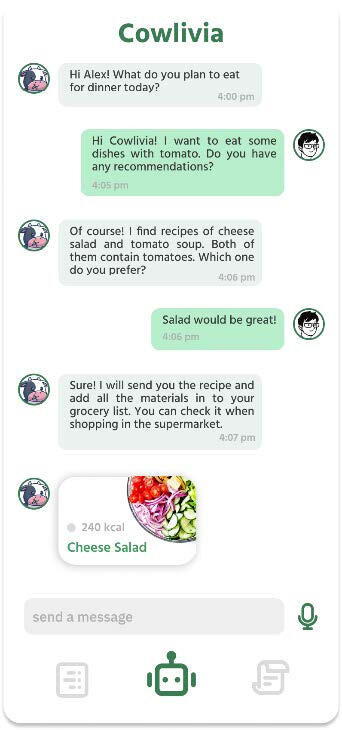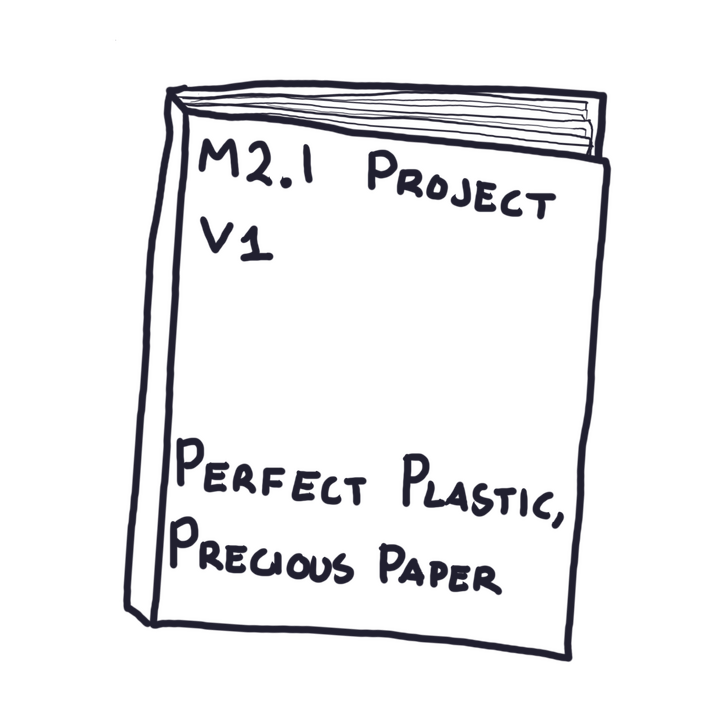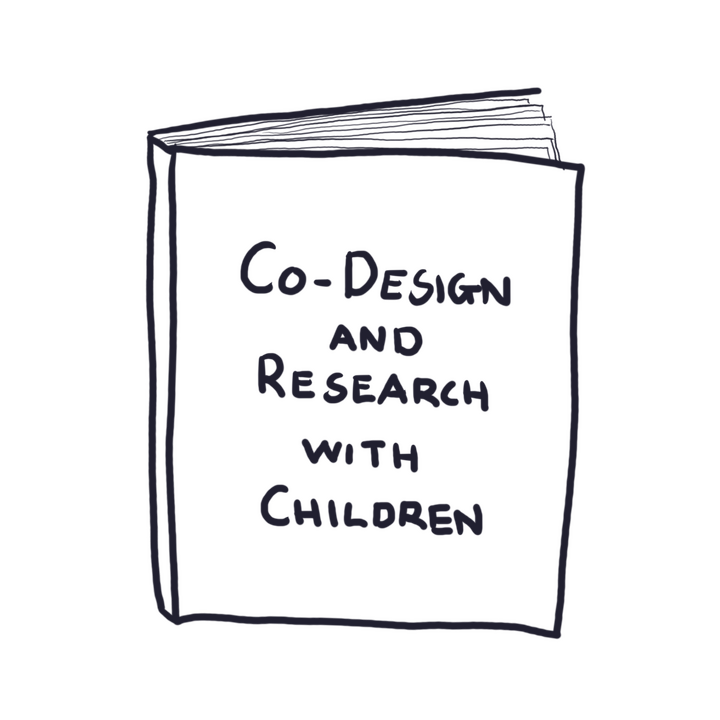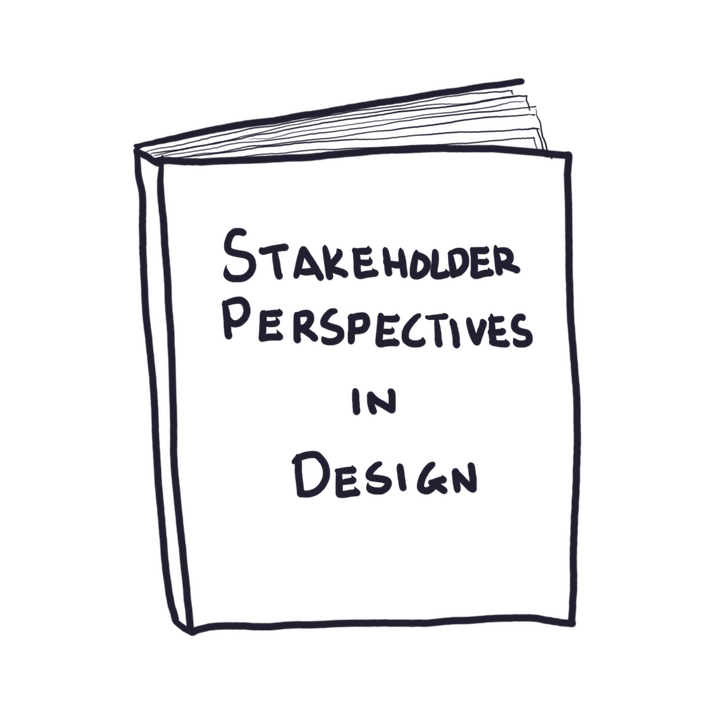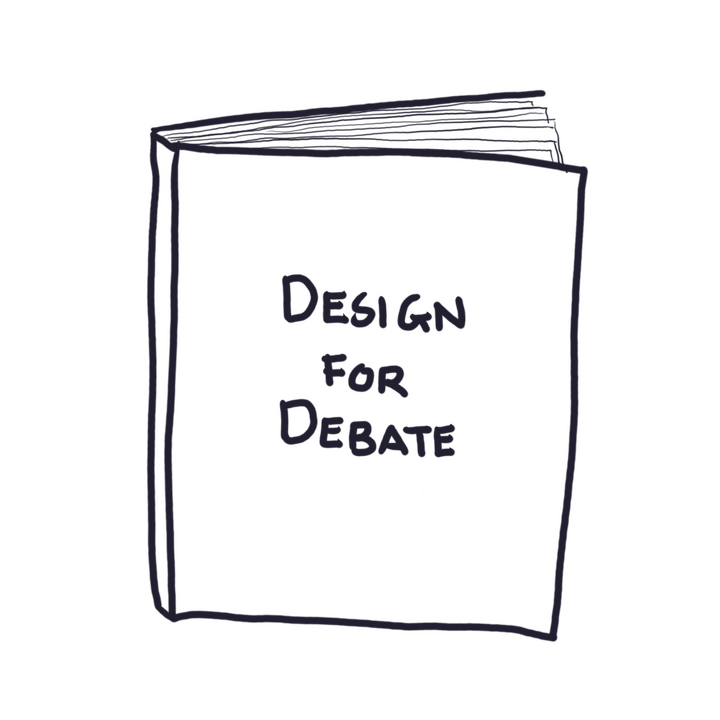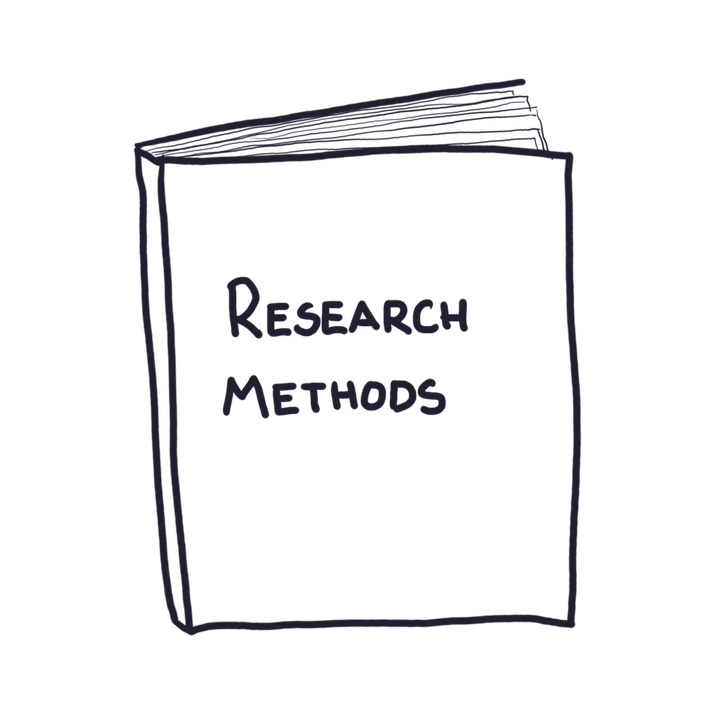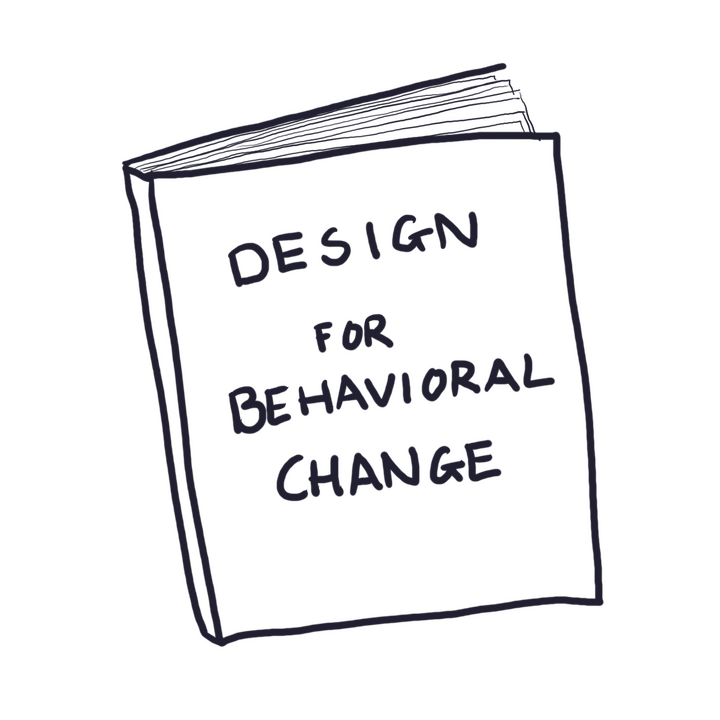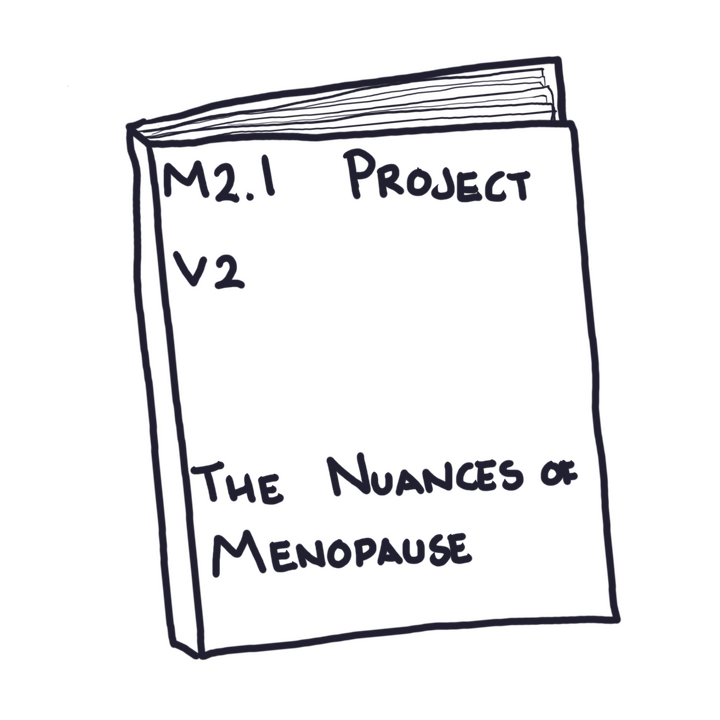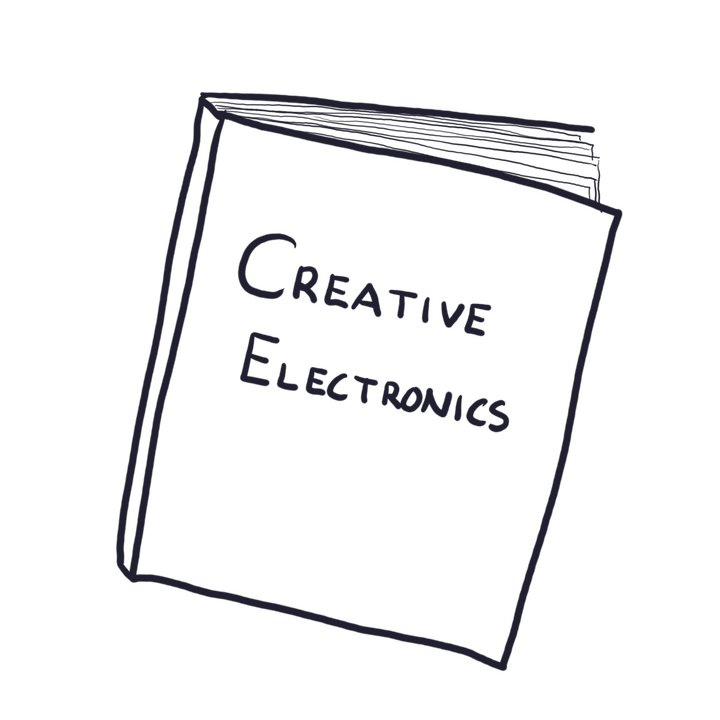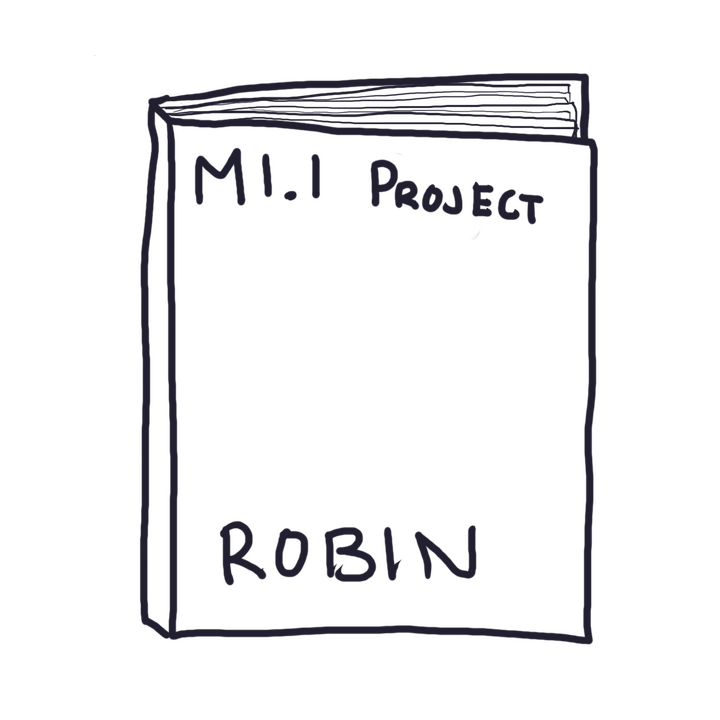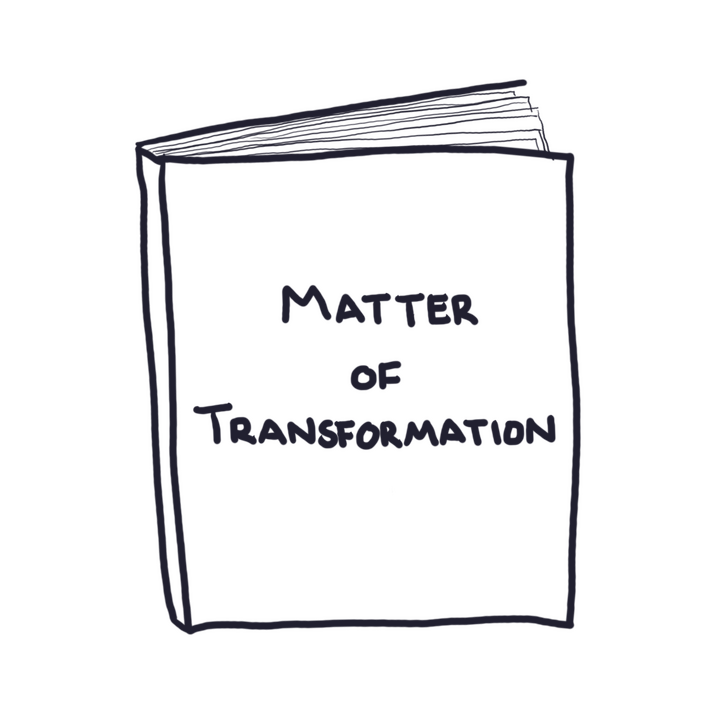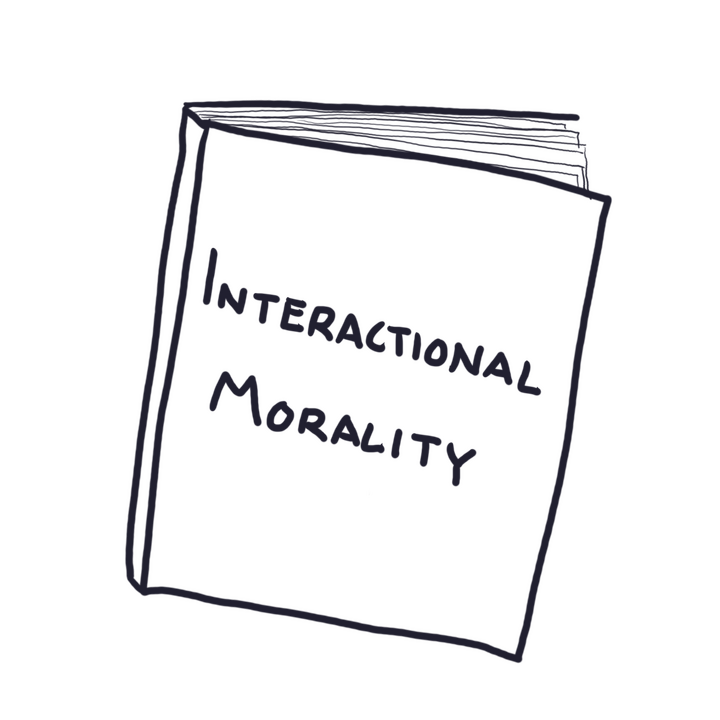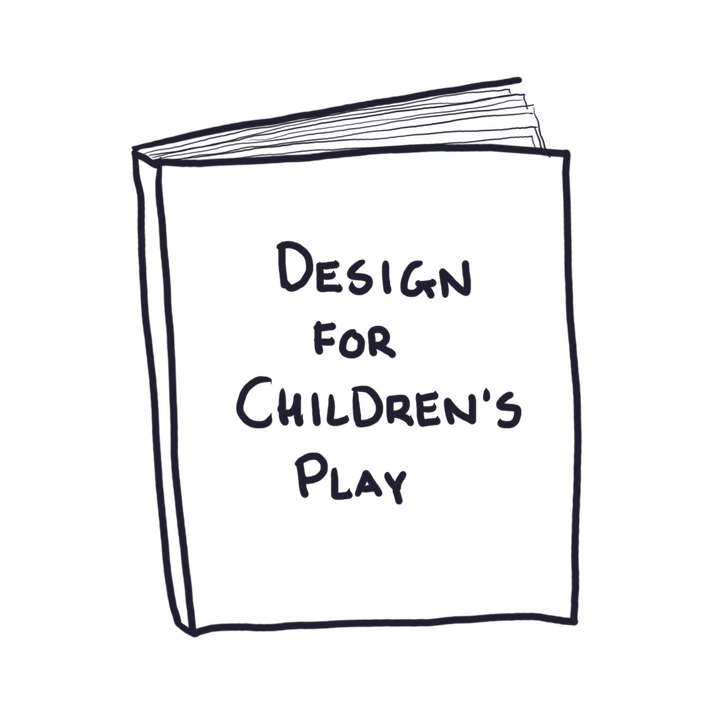"Oh hey, welcome to my studio!"
You step into a bright, messy room. A cheerful tune plays from the speaker in the corner.A woman - you recognize her as Els - sits at a desk, tinkering away at something. The desk's surface is covered in sketches, crafting materials, breadboards sprouting with wires, and post it notes with hastily scribbled measurements. On the screen of the open laptop, you see an open file with lines of code.The woman looks over her shoulder and smiles. "Feel free to look around; there's some interesting stuff in the cabinet over there, if you're curious." She turns back to her work.
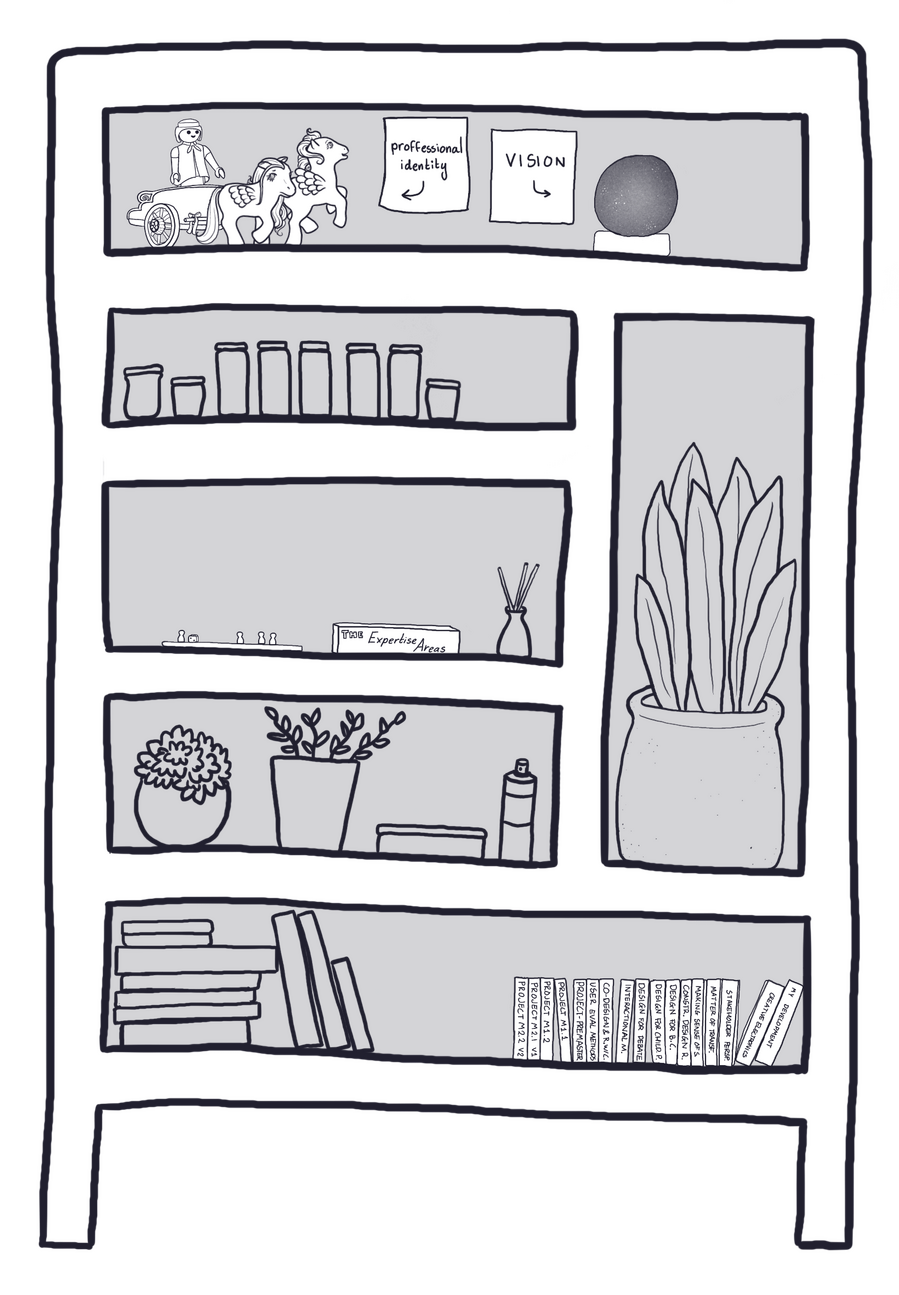
You take a look at the cabinet.On the top shelf you see a seemingly random assortment of children's toys; and a sticky note reading: Professional Identity. Next to the toys stands a snow globe labeled "Vision".Next, you see a board game. The box, laying next to it reads The Expertise Areas.On the next shelf stand a row of binders, filled with notes on different university courses and projects. Browsing these should give you a good idea of the things Els has learned over the past years.
You could also take a step closer to the desk Els is working at, and ask her about what's she's currently working on. Perhaps she could tell you a bit about how her current work relates to all the things in the cabinet.
The room is bright and messy. A cheerful tune plays from the speaker in the corner. Els tinkers away at her chaotic desk, sometimes humming to the music.
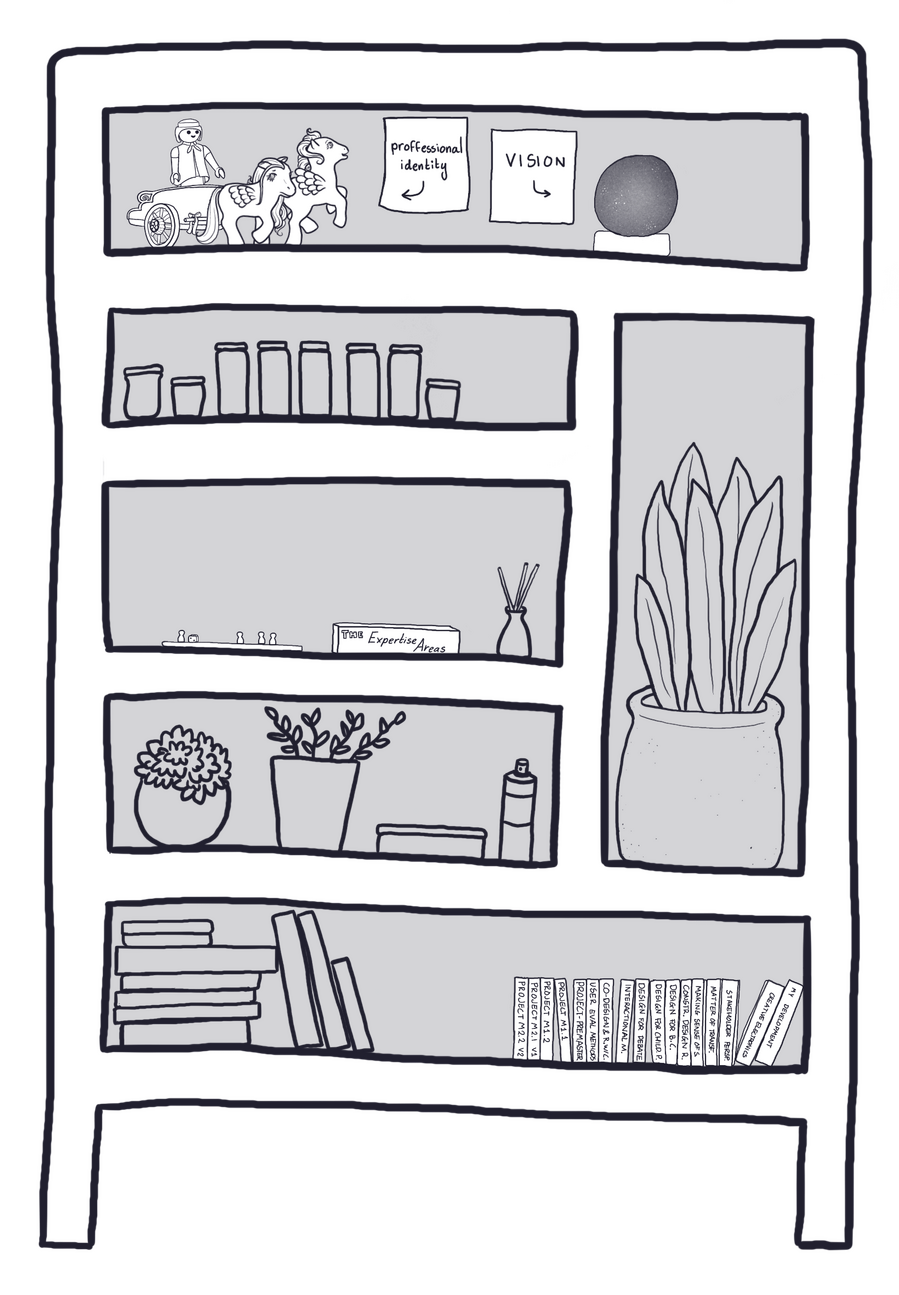
You take a look at the cabinet.On the top shelf you see a seemingly random assortment of children's toys; and a sticky note reading: Professional Identity. Next to the toys stands a snow globe labeled "Vision".Next, you see a board game. The box, laying next to it reads The Expertise Areas.On the next shelf stand a row of binders, filled with notes on different university courses and projects. Browsing these should give you a good idea of the things Els has learned over the past years.
You could also take a step closer to the desk Els is working at, and ask her about what's she's currently working on. Perhaps she could tell you a bit about how her current work relates to all the things in the cabinet.
On the shelf stands a row of binders, filled with notes on different university courses and projects. You pick up the first, simply titled "My development", and leaf through it.You read:
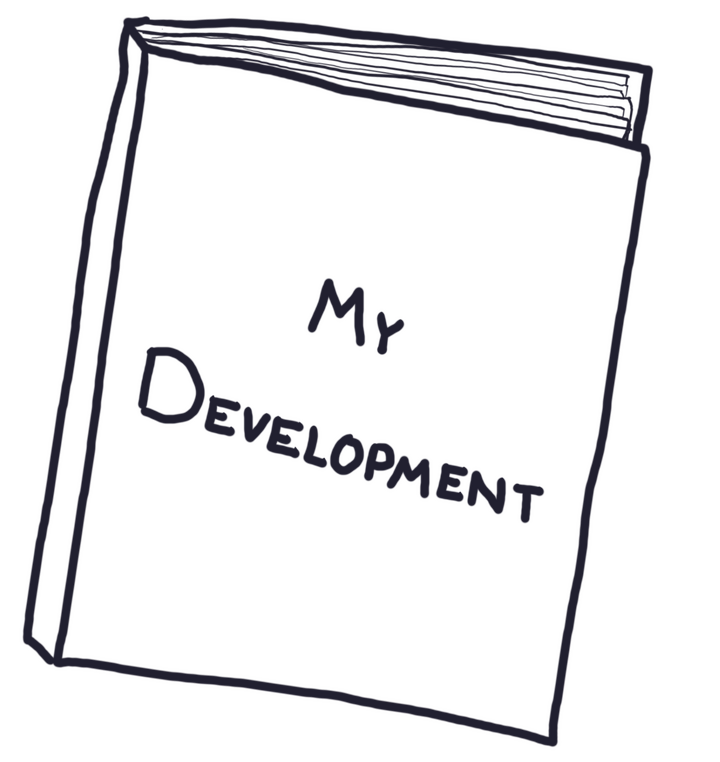
I completed my bachelor’s degree in design at art academy Minerva in Groningen. My bachelor’s was mostly focused on craftsmanship and artisanal design; I learned little about design theory. In terms of the expertise areas, I had a strong foundation in C&A and some basic knowledge and skill in B&E and T&R. I wanted to study industrial design at a university to get a stronger theoretical foundation that could compliment my existing skills. At that point, I imagined this as knowledge of materials and industrial manufacturing methods, as well as knowledge of historical and current design theory.When I started my pre-master at the TU/e, my designated areas of improvement were U&S and MD&C. Through the courses I followed (Creative Electronics, Making Sense of Sensors, Stakeholder Perspectives in Design, and User Evaluation Methods) I was introduced to the areas of U&S and MD&C, and gained a better understanding of the areas of B&E and T&R. Especially with learning about user evaluation methods, I felt like my eyes were opened to a new side of design, one I found immensely interesting.Constructive Design Research in the first semester of the master deepened my interest in the research side of design. I chose the CDR track, and focused on developing myself in the areas of U&S and C&A. As I describe in my Vision, I came to view these areas as the defining features of what makes something design.As a designer, my main strength and passion still very much lies with C&A. Throughout my master, I have taken courses (Design for Debate, Interactional Morality) that have helped me become more critical and reflective in the way I develop the aesthetics of my designs. Aside from sharpening my own taste and intuition, I have become more adapt in positioning my own designs in relation to existing works from the academic world of HCI and design, commercial design, and art.My development is most apparent in the area of U&S. I have taken courses to develop my knowledge and application of user evaluation and research methods (Research Methods, Design for Children’s Play (Delft), Co-Design and Research with Children (Delft)), and courses that helped to improve my theoretical foundation in the psychology and ethics of design (Design for Behavioral Change, Interactional Morality). I have become adapt in applying these methods in a more explorative and informal way during a design process, as well as in a structured and academically rigorous way. For example, the work me and my team did for the course Research Methods was further developed in collaboration with PhD candidate Yeup Hur and Prof. Panos Markopolous, and published as a paper by the Design Research Society(Hur et al., 2024).I tend to contextualize my development in, and use of, the other expertise areas in relation to U&S and C&A; for example using a specialized coding language to create a branching interactive narrative (T&R + C&A); using benchmarking methods to analyze the aesthetics of existing designs and consciously positioning your own aesthetic choices in relation to that (B&E + C&A); and analyzing existing large data sets to explore questions about users’ experiences with a design context (MD&C + U&S). While my development in these areas has been less pronounced than with C&A and U&S, during my master I have gained a better insight into the role of each in relation to design, and have learned about important methods, tools, and theories from each area.
Referenced:
Hur, Y., van der Jagt, L., Boer, G., Hendriksma, T., van Raaij, E., & Markopoulos, P. (2024). A case study into the role of bodily expertise in somatic design ideation. Proceedings of DRS. https://doi.org/10.21606/drs.2024.1379
You close the "My Development" binder and put it back on the shelf. The rest of the binders stand neatly in a row; you could take a peak if you are curious, or you might take a look at the other things in the cabinet.
Your eyes are drawn to the other things in the cabinet.
On the shelf, you see two My Little Ponies, and a pink toy chariot with a little Playmobil figurine. You look at the sticky note next to the toys: Professional Identity.
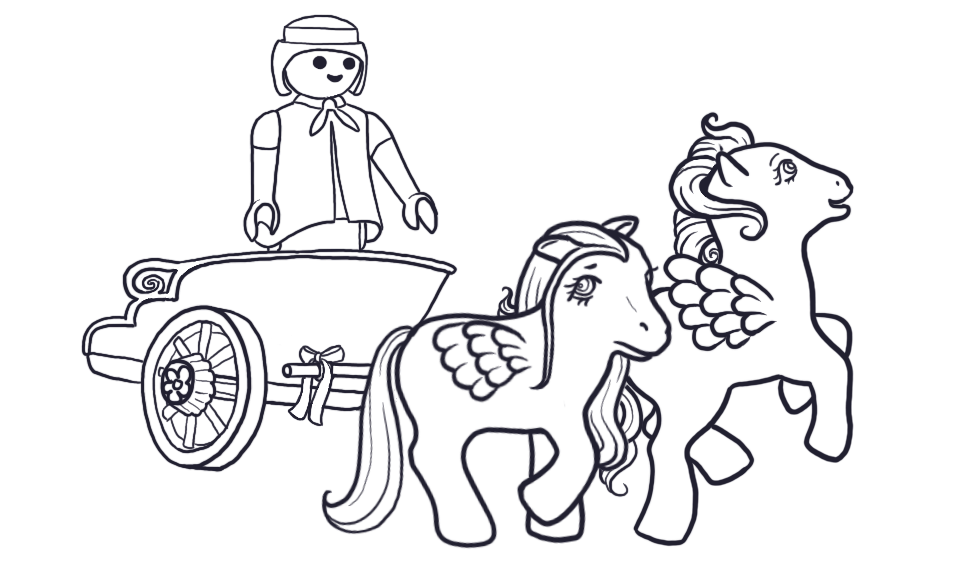
Els looks up from her work."Oh, the ponies..." She smiles. "I suppose those merit an explanation, right?" She stands up to join you at the cabinet."Have you ever heard of Plato’s chariot allegory?It’s a metaphor for the soul. The rider on the chariot is your reason. There is a white horse; your moral compass, or your conscience. It’s very well-behaved, to the point of being a bit passive. Then there’s a black horse; your passion and desire. It’s feisty and unruly, difficult to control; but it’s strong and fast, and pulls the chariot very well.Basically, it is up to the rider to encourage the white horse to run and help pull the chariot, while reigning in the black horse. It’s all about balancing the two and making them work together so that they are pulling in the same direction: the direction that you, as the rider, want to go. The metaphor really fits with how I conceptualize myself as a designer.The black horse I see as my drive to create, which is intuitive and feels very joyful, almost hedonistic. Sometimes I can lose myself a bit in the simple joys of making and forget to think about where I’m going with it; then the white horse helps give direction. The white horse I see as the values that inspire me in life and as a designer, based on movements and theories like intersectional feminism, sex positivity, animal rights, and ecofeminism. While these are inspiring and moving, I can feel paralyzed by the complexity and systemic nature of these issues, which is when the black horse’s power pushes me forward again.I used to see these two horses as contradictory, but now I rather think of them as complimentary aspects of my identity as a designer. They’re also heavily context dependent. For example, I’m quite strong at thinking creatively, visualizing ideas, and crafting. I tend to approach designing from the aesthetic and emotional, and it comes less naturally to me to design for optimization, efficiency, and pure functionality. Because of this, in the TU/e context, I’m like the funky, artsy one who does everything by intuition. In group projects here, I was strong at introducing wild ideas in brainstorming sessions, to help us think out of the box, and I often played a large role in developing the aesthetics of our deliverables. Meanwhile, in the art school context, I was the organized and well-thought-through one. I liked to read essays and papers to inspire my making, and in collaboration with others I was almost always the person who managed the planning and structure of the process.Throughout my master, I’ve become stronger at leveraging the strengths of each 'side' at the right moment in the design process. I learned more about the theory of design processes, which has helped me to structure and conceptualize my own process. For example, I currently like to work with the Reflective Transformative Design Process (Hummels & Frens, 2009), and also used it as a framework in my final master project. I also learned a lot about the academic design world, and the theories and research methods of our field. I’ve found researchers that inspire me in their intuitive, explorative approaches and emphasis on making as a part of research (Cochrane et al., 2022; Devendorf et al., 2020; Hua et al., 2023; Muehlbrandt et al., 2022; Sturdee et al., 2021; Teisanu et al., 2024), as well as great feminist design researchers who examine the politics of what we create (Almeida et al., 2019; Bardzell & Bardzell, 2011; Carpenter et al., 2018; Homewood, 2019; Hua et al., 2022; Lopez Burst et al., 2024; Nägele et al., 2018; O'Neill et al., 2024; Søndergaard et al., 2020; Woytuk et al., 2024).Since before the start of my master, I’ve been interested in toy design, and I’ve followed courses and done projects to develop my knowledge of that field. I still have ambitions to work in that field, although...” She thinks for a moment. “The honest truth is, I plan to move to an area with very few, if any, opportunities in that area. Realistically, I will try to find a job where I can add value through the unique combination of skills and knowledge I gained from going to both an art school and a university of technology. I’ve been fantasizing about starting my own company or initiative related to toy design in the area where I plan to live, though.”Els smiles. “Who knows. For now, I’ve got to get back to my work.” She returns back to her work at the desk.
Next to the toys stands a snow globe labeled "Vision". You could also take another look at the things in the cabinet.
Before looking away, you notice a sticky note on the cabinet, labeled Professional Identity references:
Referenced:Almeida, T., Chen, K. L., Comber, R., & Balaam, M. (2019). Dismantling feminist biology through the design of etextiles. In Research through Design 2019. https://www.diva-portal.org/smash/get/diva2:1282782/FULLTEXT01.pdfBardzell, J., & Bardzell, S. (2011). Pleasure is your birthright: digitally enabled designer sex toys as a case of third-wave HCI. Proceedings of the SIGCHI Conference on Human Factors in Computing Systems. https://doi.org/10.1145/1978942.1978979Carpenter, V., Homewood, S., Overgaard, M., & Wuschitz, S. (2018). From sex toys to pleasure objects. Electronic Workshops in Computing. https://doi.org/10.14236/ewic/evac18.45Cochrane, K. A., Mah, K., Ståhl, A., Núñez-Pacheco, C., Balaam, M., Ahmadpour, N., & Loke, L. (2022). Body maps: A generative tool for Soma-based design. Sixteenth International Conference on Tangible, Embedded, and Embodied Interaction, 1–14. https://doi.org/10.1145/3490149.3502262Devendorf, L., Andersen, K., & Kelliher, A. (2020). Making design memoirs: Understanding and honoring difficult experiences. Proceedings of the 2020 CHI Conference on Human Factors in Computing Systems. https://doi.org/10.1145/3313831.3376345Homewood, S. (2019). Inaction as a design decision: Reflections on Not Designing Self-Tracking Tools for Menopause. Extended Abstracts of the 2019 CHI Conference on Human Factors in Computing Systems. https://doi.org/10.1145/3290607.3310430Hua, D. M., Jones, R., Bardzell, J., & Bardzell, S. (2022). The hidden language of vibrators: A politico-ontological reading. Designing Interactive Systems Conference. https://doi.org/10.1145/3532106.3533448Hua, D. M., Bardzell, J., & Bardzell, S. (2023). Embodied embroidery: Somaesthetic interaction design for women’s masturbation. Proceedings of the Seventeenth International Conference on Tangible, Embedded, and Embodied Interaction. https://doi.org/10.1145/3569009.3572803Hummels, C., & Frens, J. (2009). The reflective transformative design process. CHI ’09 Extended Abstracts on Human Factors in Computing Systems, 2655–2658. https://doi.org/10.1145/1520340.1520376Lopez Burst, E., Ciolfi Felice, M., & O’Kane, A. A. (2024). Using and appropriating technology to support the menopause journey in the UK. Proceedings of the CHI Conference on Human Factors in Computing Systems, 1–14. https://doi.org/10.1145/3613904.3642694Muehlbradt, A., Whiting, G., Kane, S., & Devendorf, L. (2022). Knitting Access: Exploring Stateful Textiles with people with disabilities. Designing Interactive Systems Conference, 1058–1070. https://doi.org/10.1145/3532106.3533551Nägele, L. V., Ryöppy, M., & Wilde, D. (2018). PDFI: Participatory Design Fiction with Vulnerable Users. Proceedings of the 10th Nordic Conference on Human-Computer Interaction, 819–831. https://doi.org/10.1145/3240167.3240272O’Neill, D., Birk, M. V., & Mandryk, R. L. (2024). Unpacking norms, narratives, and nourishment: A feminist HCI critique on Food Tracking Technologies. Proceedings of the CHI Conference on Human Factors in Computing Systems, 1–20. https://doi.org/10.1145/3613904.3642600Søndergaard, M. L., Kilic Afsar, O., Ciolfi Felice, M., Campo Woytuk, N., & Balaam, M. (2020). Designing with intimate materials and movements: Making “Menarche Bits”. Proceedings of the 2020 ACM Designing Interactive Systems Conference. https://doi.org/10.1145/3357236.3395592Sturdee, M., Lewis, M., Strohmayer, A., Spiel, K., Koulidou, N., Alaoui, S. F., & Urban Davis, J. (2021). A plurality of practices: Artistic narratives in HCI Research. Creativity and Cognition. https://doi.org/10.1145/3450741.3466771Teisanu, S., Tomico, O., & Andersen, K. (2024). Felt experiences, exploring non-heteronormative pleasure. Proceedings of DRS. https://doi.org/10.21606/drs.2024.1101Woytuk, N. C., Bell, F., Park, J. Y., Alistar, M., & Balaam, M. (2024). A plurality of more-than-humanness: Feminist speculations for designing with the vaginal microbiome. Proceedings of the Halfway to the Future Symposium, 1–10. https://doi.org/10.1145/3686169.3686170
You pick up the snow globe labeled "Vision". The glitter inside twirls around tiny human figures; a miniature snow globe society.
Els looks up from her work.“Oh, the snow globe!” She smiles. “Pretty, right?”She swivels her chair around.“You know, for me, good design is inherently about pleasure; joy; fun.That might sound superficial at first glance. I think we are used to talking about design in much loftier terms: as a means to improve people’s lives, a way of leveraging technology to make the world a better place. It’s not that I disagree with this view of design, but rather that I think it runs the risk of losing sight of design’s unique strengths.Because, sure, I agree that good design is about making the world a better place. But the tools and methods your design employs to achieve that matter. For example, getting people to make the right, world-improving choices could be achieved by simply making the wrong option unpleasant. In the end, that just increases the amount of unpleasantness in the world; I like to call that shock-collar design. Like calorie tracking apps that shame you for going over a daily calorie limit, or, you know, Pavlok, an actual human shock collar device. To me, these are not good designs. I believe in the value of joy and pleasure for their own sake, and I believe designers are uniquely positioned to not only create designs that improve the world, but which make that process enjoyable.Of course, when talking about making the world a ‘better’ place, the meaning of ‘better’ can be drastically different from person to person. Generally, my idea of ‘better’ is guided by my belief in intersectional feminism and the urgency of environmental sustainability.The future that I envision, and which I want to design for, is one in which we have drastically changed our consumption habits. Consumerism as it is today is not only environmentally unsustainable, but has changed the way we perceive the value of materials and objects. I see it as the duty of designers to find ways to resist this, both as makers and as consumers. In this I am inspired by researchers and designers such as Katriina Heljakka, who writes about the ways in which toy designers can design their toys to not only be physically durable, but to become items that will be cherished and treated with care by their players (Heljakka, 2022). Or for example by Wu et al. (2022), who proposed a service design to support the recycling and reuse of existing fashion items and clothes. By making the process of recycling and reusing clothes fun and communal, they show how designers can make a difference by reshaping existing practices, rather than by creating more ‘stuff’ to consume.Aside from taking better care of our belongings and our planet, I also want to design for a future in which we take better care of each other and ourselves. The idea of taking care of ourselves is slowly shifting from a purely physical conception of health to a more nuanced and holistic idea of wellbeing. I am inspired by feminist design researchers who are using design to rethink and reshape the way technology interacts with our bodies. For example, the work by Woytuk et al. (2023), whose work on sensor technology for vaginal fluids shows that getting to know your body can be valuable in itself, without the necessity of a specific purpose like knowing when you are fertile. Carpenter et al. (2018) similarly reimagine the interaction between technology and the body, in their case in the context of sex toys. By reimagining these as ‘pleasure objects’, they broaden up the idea of how technology can provide sensual pleasure to the body, and how users can play a role in shaping their own interactions with this technology.”
Next to the snow globe, you see a seemingly random assortment of children's toys; and a sticky note reading: Professional Identity. You could also take another look at the things in the cabinet.
Before looking away, you notice a sticky note on the cabinet, labeled Vision references:
Referenced:Carpenter, V., Homewood, S., Overgaard, M., & Wuschitz, S. (2018). From sex toys to pleasure objects. Electronic Workshops in Computing. https://doi.org/10.14236/ewic/evac18.45Heljakka, K. (2022). On longevity and lost toys: Sustainable approaches to toy design and contemporary play. Toys and Sustainability, 19–37. https://doi.org/10.1007/978-981-16-9673-2_2Woytuk, N.C., Park, J. Y., Maslik, J., Ciolfi Felice, M., & Balaam, M. (2023). Tactful feminist sensing: Designing for touching vaginal fluids. Proceedings of the 2023 ACM Designing Interactive Systems Conference. https://doi.org/10.1145/3563657.3595966Wu, D., Zhuang, M., Zhang, X., & Zhao, Y. (2022). Towards circular fashion: Design for community-based clothing reuse and upcycling services under a Social Innovation Perspective. Sustainability, 15(1), 262. https://doi.org/10.3390/su15010262
You see a board game, depicting a map with five areas. The box, laying next to it reads The Expertise Areas. On the back of box is a short general text explaining what this game is all about:
The Expertise Areas are five magical kingdoms, each with their own unique powers. When they work together, they channel the powers of DESIGN!
Inside the box, you find the game's player manual, which starts with an introduction to each of the five Expertise Areas:
Creativity & Aesthetics (C&A)
To me, C&A is about honing the skills that let you create freely and intuitively, and about the conscious development of your own aesthetic taste. I see it coming back in the other expertise areas in the ability to bring beauty to whatever you do, and the ability to think outside of that expertise’s “box”. For example:
- Organizing fun and creative ways for participants in a user study to give their input, so that participation is more inspiring than simply filling in a survey (U&S)
- Presenting your circuit diagrams, schematics, and code in a way that is not just functional and understandable, but attractive for others to engage with (T&R)
- Recognizing opportunities for innovation within a specific design context, and being able to ideate creative and unique business ideas for that context (B&E)
- Creating aesthetically pleasing ways to visualize and present “dry” data (MD&C)
User & Society (U&S)
I see the U&S expertise as the process of building and leveraging your awareness of the broader societal and political context surrounding your design, through sensitive engagement with relevant stakeholders. Applying U&S to the other expertise areas means having a critical and reflective attitude to your knowledge and skills in those areas, and modifying your actions accordingly. For example:
- Using traditional textile handicrafts as aesthetic inspiration in a feminist design project, to reclaim the historical connotation of these methods as “women’s work” (C&A)
- Taking care to consider a product’s impact beyond its use, and also considering how the chosen materials will impact the user, society at large, and the environment when the product breaks or becomes obsolete (T&R)
- Understanding “value” as more than a strictly economical term, and considering ways in which a business can meaningfully benefit a community rather than solely its founders (B&E)
- Being aware of the way artificial intelligence can emulate human biases, and being vigilant about avoiding those patterns in your own programs (MD&C)
Technology & Realization (T&R)
T&R is about having the skills to build high-fidelity, interactive prototypes; and the knowledge of how production of those prototypes could be scaled up to create fully realized designs. It comes back in the other expertise areas through an awareness of different technological methods to achieve an intended effect, and the ability to pragmatically choose the best one for the situation. For example:
- Being able to think of a variety of materials and methods to achieve the same aesthetic effect, and being able to select the proper material based on both its aesthetic and practical implications (C&A)
- Building a quick initial prototype that is able to simulate enough of the intended interaction that participants in a user study are able to give useful feedback (U&S)
- Having the knowledge to be able to analyze how competitors’ designs are constructed, and learning from this in the construction of your own (B&E)
- Being aware of the best practices for writing code, and being able to write code that is clean and efficient (MD&C)
Business & Entrepreneurship (B&E)
B&E covers the knowledge and skills to realize the production and distribution of a design to its intended users. When making design decisions from the other expertise areas, B&E is represented through the question: but what if this had to be commercially produced; how can I make this decision feasible, and what is the market for something like this? For example:
- Analyzing the aesthetics of existing commercial competitors, and strategically shaping your design’s visual language to distinguish it from the competition (C&A)
- Organizing focus groups to gauge whether intended users are interested in the proposed product, and adjusting based on feedback (U&S)
- Researching different ways to produce a design as well as the associated material and manufacturing costs; doing market research to help inform the decision for a specific price tier and the associated materials and manufacturing methods (T&R)
- Making sure that the collection and analysis of data in a designed system complies with laws and regulations, and being aware of the possibility of deterring potential customers when deciding what data will be collected from them (MD&C)
Math, Data, & Computing
MD&C is being able to analyze and handle large amounts of data, and being able to use computational programs and languages to do so. In relation to the other expertise areas, MD&C is about leveraging mathematics and data analysis to generate input relevant to that expertise. For example:
- Writing code to generate beautiful visuals, like with algorithmic art (C&A)
- Setting up a large-scale user study, considering beforehand how the data will be analyzed to generate insights, and what that means for the design of the study (U&S)
- Thinking about how a phenomenon like emotion translates to measurable variables, what sensors are needed to make those measurements, and how those measurements can be leveraged in the design (T&R)
- Analyzing historical trends as well as the current market to predict how well a product of business will likely perform (B&E)
You place the user manual back in the box. To get a better idea of how the expertise areas helped Els to, ahem, channel the power of DESIGN, maybe it's interesting to look at the shelf with binders about the different courses and projects she did. Or you could take a look at the other things in the cabinet.
As you approach the desk Els is working at, she looks up."Oh, would you like me to tell you a bit about what I'm working on? This is my final master project; I've been working on designing a qualitative self-tracking tool for people going through the menopausal transition. I call it Landscape, because it allows users to make a visual and material mapping of their menopausal experience, which can change over time.Within the project, I developed an aesthetic visual language to reflect on and communicate about menopausal experiences, basing myself on existing HCI research approaches, visual art about menopause, and a user study with menopausal people (C&A).I consciously positioned my design in opposition to existing self-tracking technologies for menopause through the use of qualitative, rather than quantitative data, inspired by research from the social sciences and HCI. To gather input for my project I based myself on a variety of user research methods, with a focus on communicating sensitive experiences in metaphorical ways (U&S).I built an interactive prototype that displays digital visualizations informed by a user’s physical interactions with the design (T&R).While I did not develop the design with the intention of it being commercially viable, I did reflect on the way my design relates to the broader commercial landscape of technologies for menopause. I described the way in which the approach I took could be valuable in developing more surprisingly designed technologies for menopause, and formulated a value proposition for the final iteration of the design. (B&E).To supplement the understanding of the menopausal experience I had gotten through desk research and informal conversations, I analyzed a large existing data set on the experiences of women’s health in midlife (MD&C).The emphasis on aesthetics and engagement with menopause from an explicitly feminist perspective fits well with the way I view myself as a designer, as well as my Vision on design, which is centered on the unique value design has to create beautiful things that try to make the world a better place.”
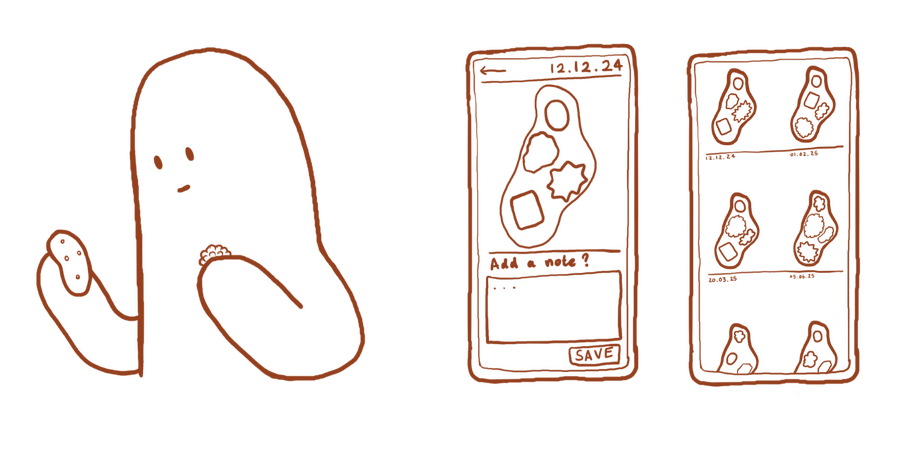
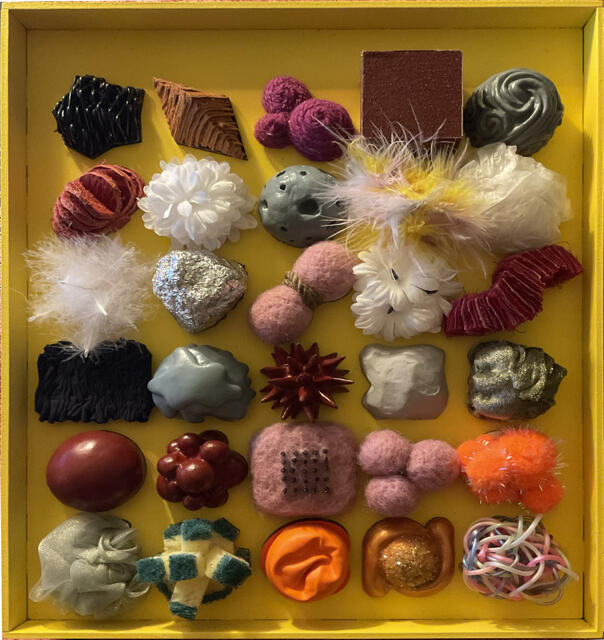

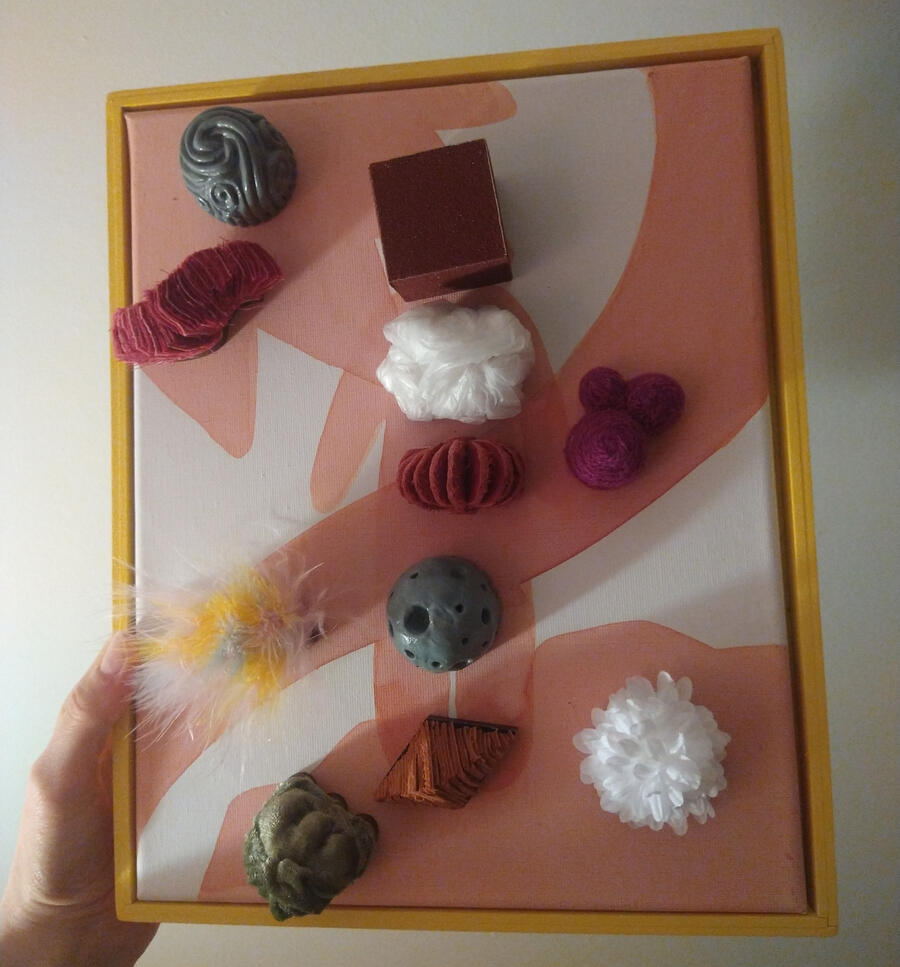

Your eyes wander back to the things in the cabinet.

Our team created a future design for an interactive smart table, which responds to the food that is placed on it.The renders in this video and poster were made by Lucas Licht Pradillo; I created the animated visuals that appear on the rendered table.
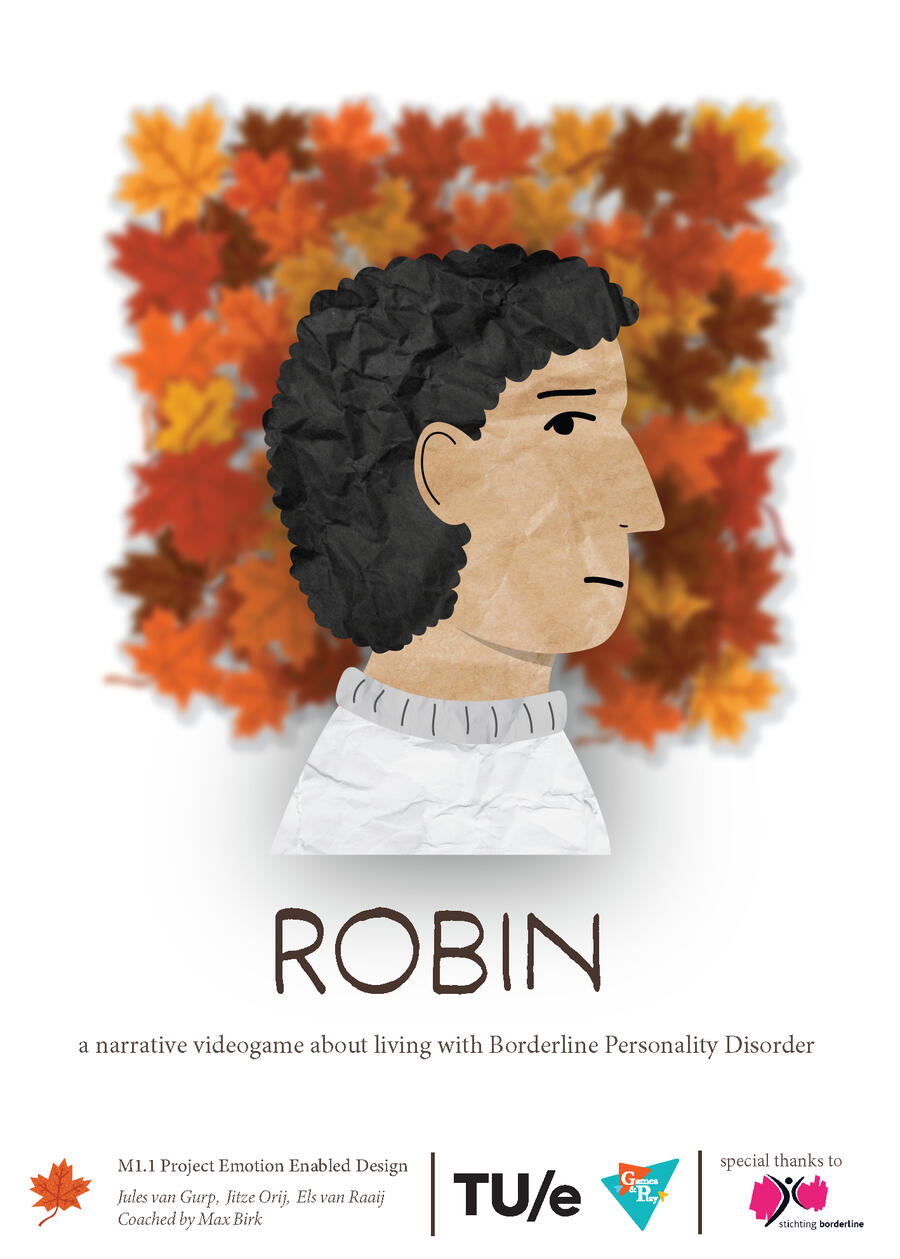
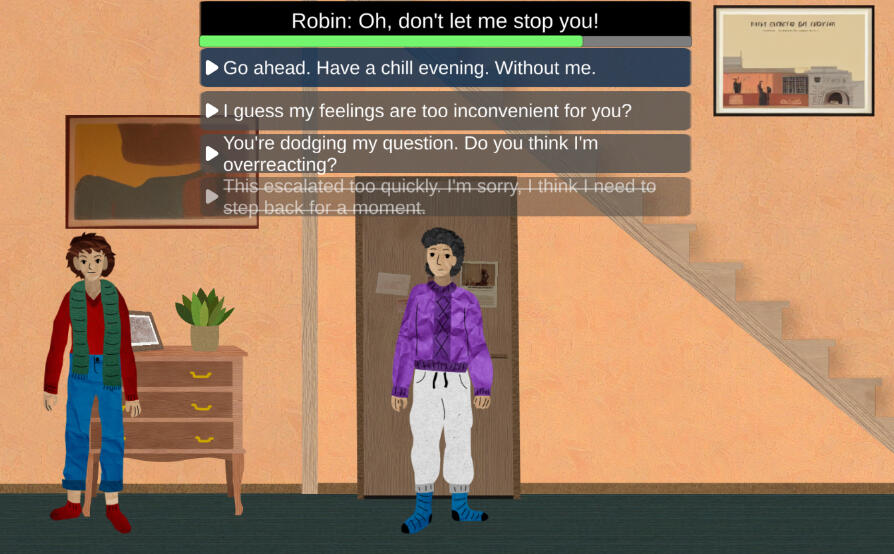
Our team created a destigmatizing demo game about Borderline Personality Disorder (BPD), in collaboration with mental health experts and people who recovered from BPD.We tested the game with students; our results suggested that the game was partially effective in destigmatizing BPD. I used the YarnSpinner language to create a branching narrative, which we connected to our game in Unity.The game can be played here.
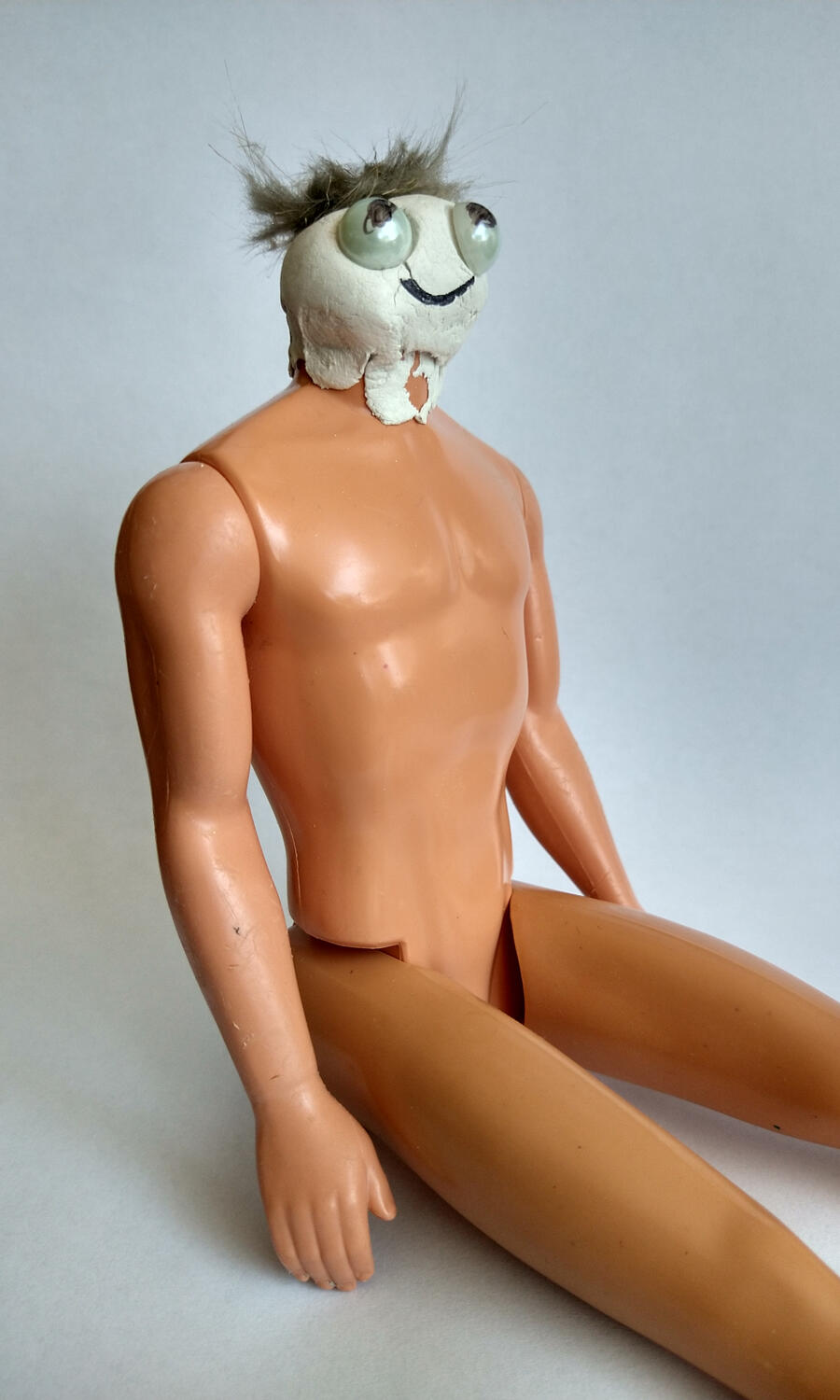
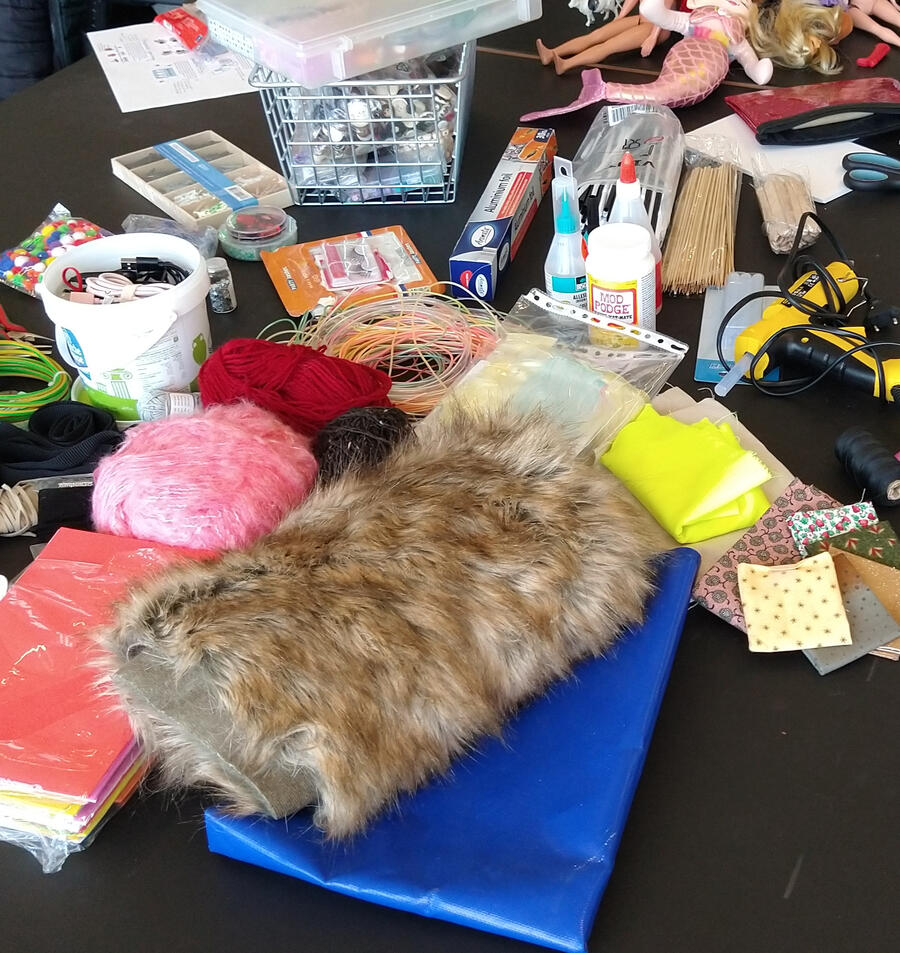
For my M1.2 research project, I held interviews with other students and co-creative sessions with children, to explore ways in which children could be more involved in the repair of their own toys.
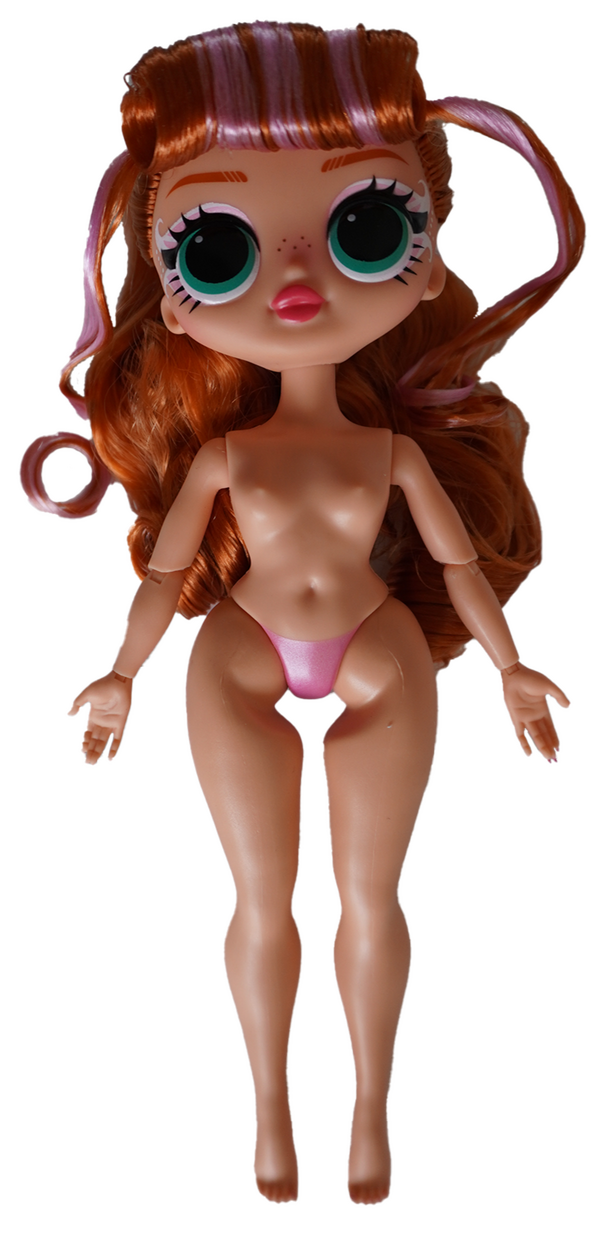
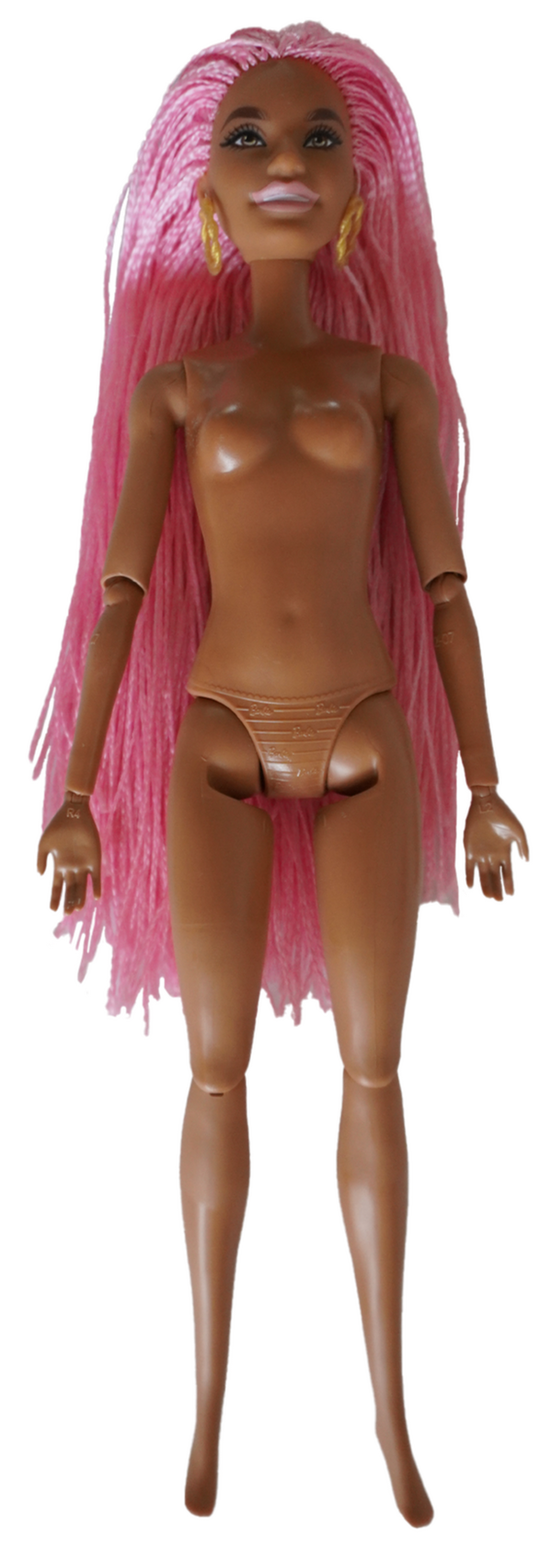
Fashion dolls such as Barbie have long been the target of criticism. Critics argue such dolls reinforce unrealistic ideals for women’s bodies, and that these are harmful to the children playing with them. However, these criticisms, while valid, often limit themselves to the visual appearance of the dolls. In this project I explored the role that a doll’s material properties play in the implicit messages it conveys.I used semiotic analysis to examine two fashion dolls. To further reflect on the role of material in creating meaning, I made material samples from paper and speculated on the meanings their materiality might convey if used to create a doll.Based on my process, I proposed
concrete design recommendations for the design of paper fashion dolls as alternatives to existing dolls.
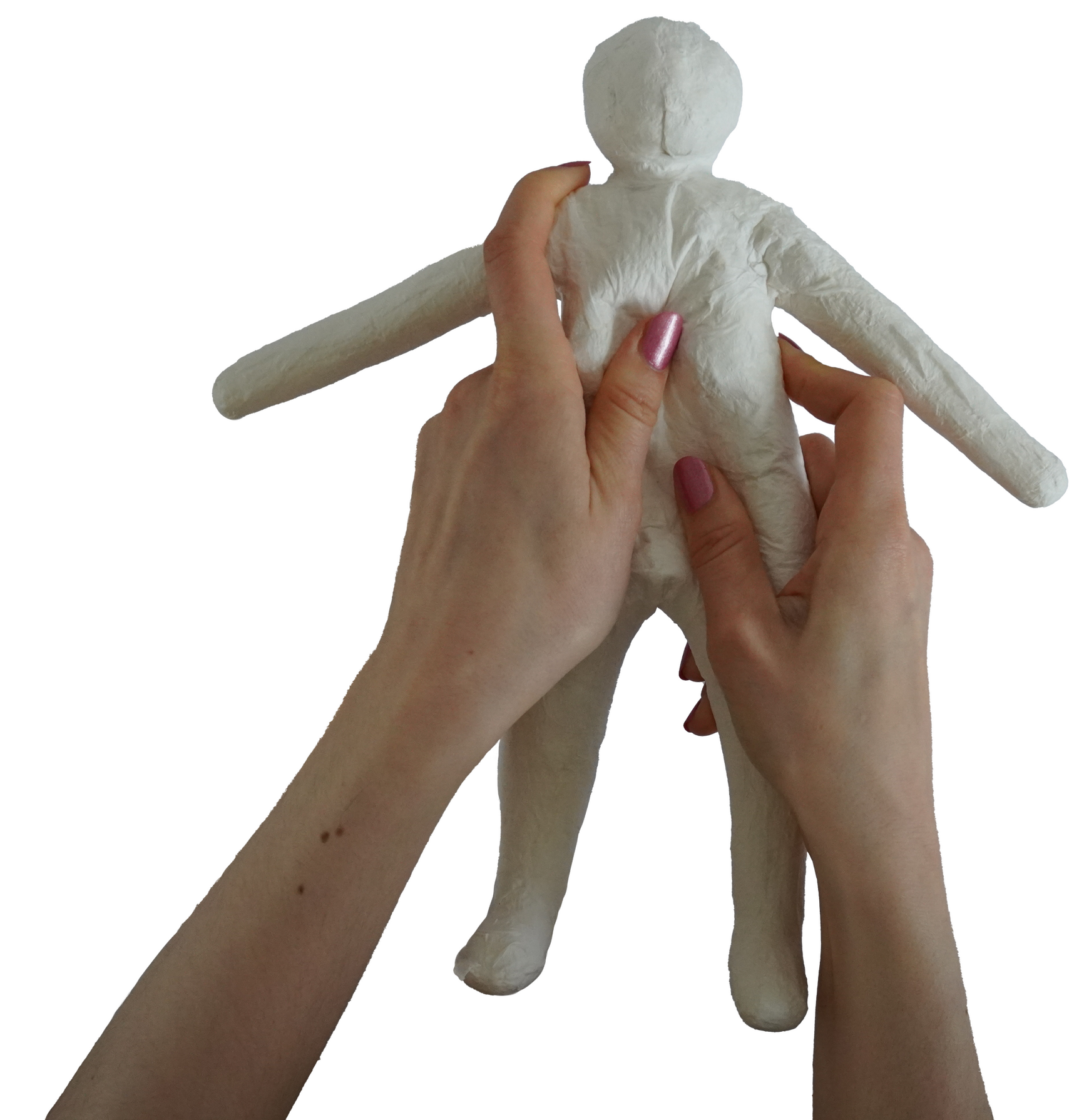
In this project, used semiotic analysis to critically examine three commercially available products for menopausal people and three visual art projects about menopause, I provide insight into the implicit messages each conveys and what design can learn from this. Lastly, I presented a set of design provocations for the context of menopause, based on these insights.
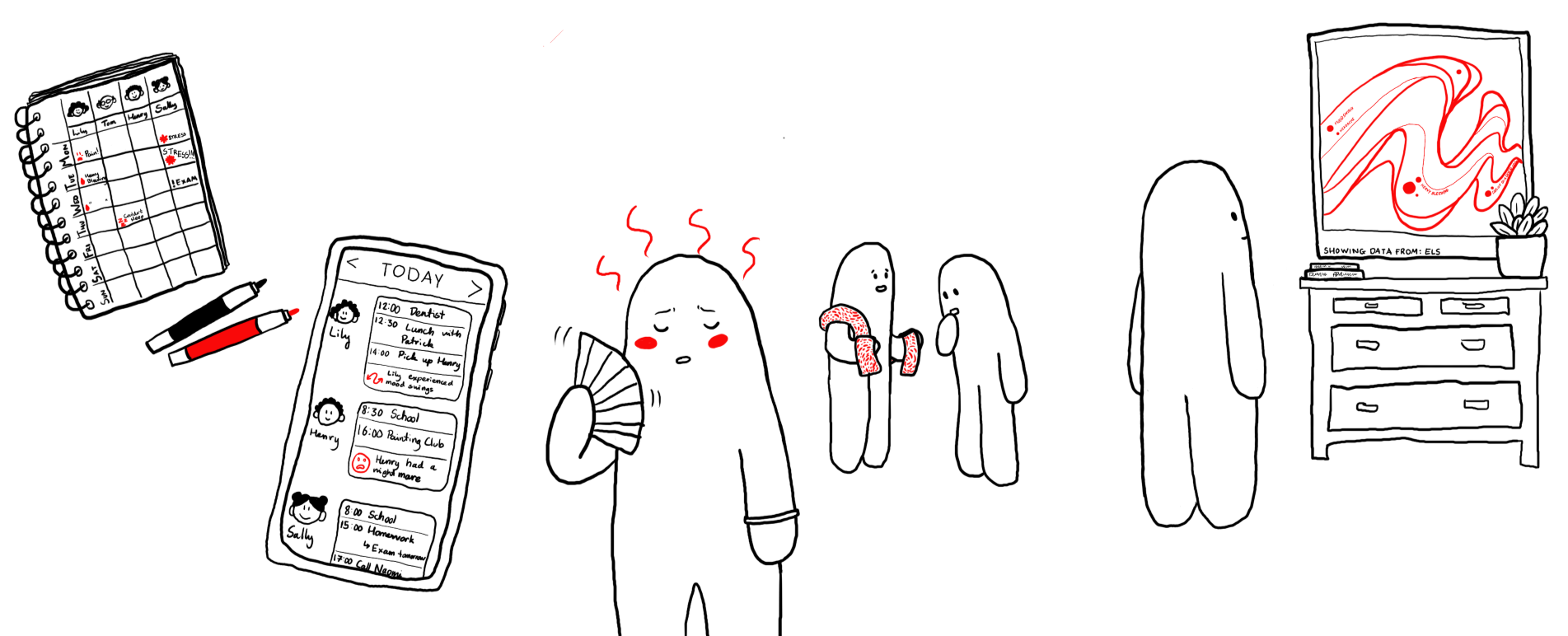
In this course I learned to work with simple electronic circuits.Me and my partner for the course consistently got positive feedback on our neat documentation and solid understanding of the circuits we built.
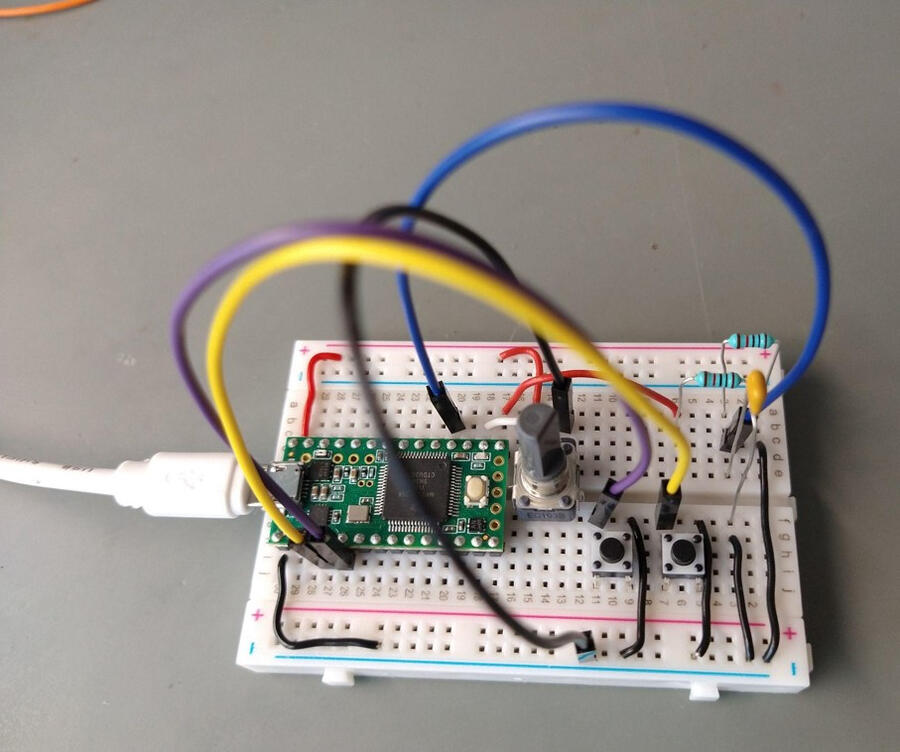

In this course I learned to work with sensors and wearable self-tracking technology.In the experiment me and my team performed we analyzed whether temperature and humidity have an effect on REM sleep.
During this course, our team developed a design concept for a dementia-friendly fanspace for PSV fans with dementia.
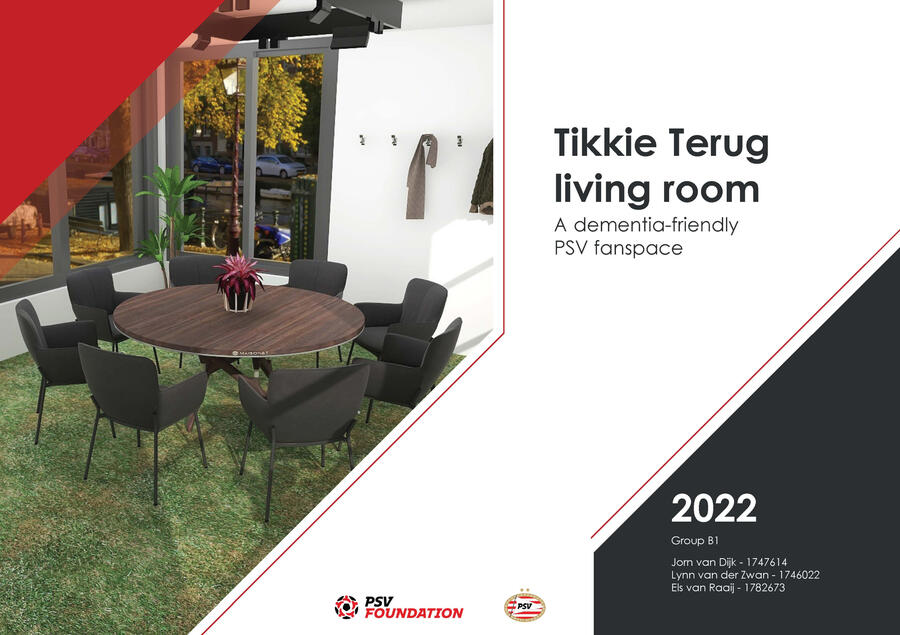
In this course I improved my theoretical knowledge of user evaluation methods.
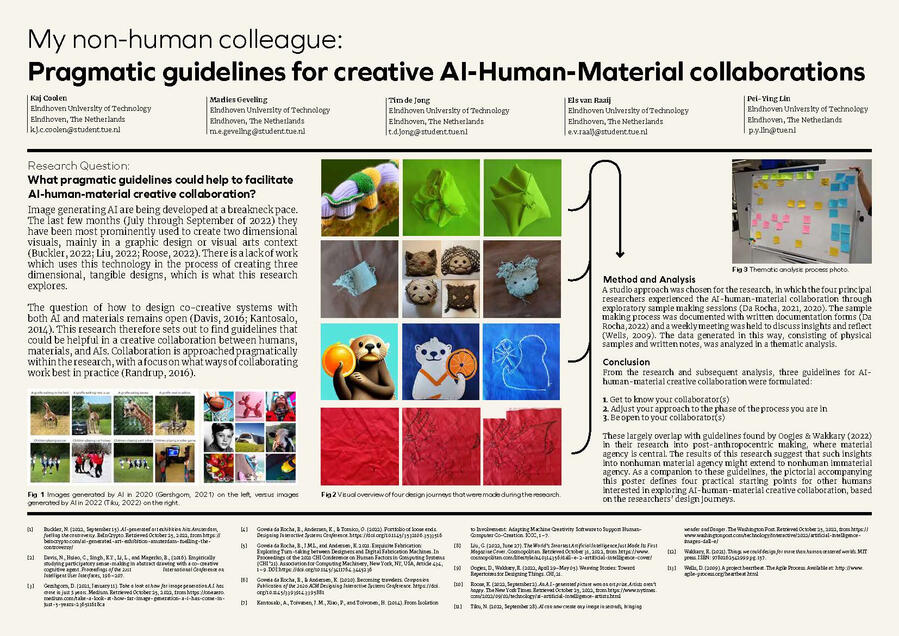
In this course I learned about design research methods. Me and my team researched the possibilities of incorporating generative AI into a co-creative design process.My thoughts on AI in design have changed since this project (this was in 2022), but I still think this was a nice exploration of a technology that was (then) quite unknown to me.
In this course we read the book "Things we could design for more than human-centered worlds" by Ron Wakkary. Me and my team explored the contradictions of a human designer trying to create non-human work, through a narrative exhibition of the works of a fictional designer called T.J. Gabin.

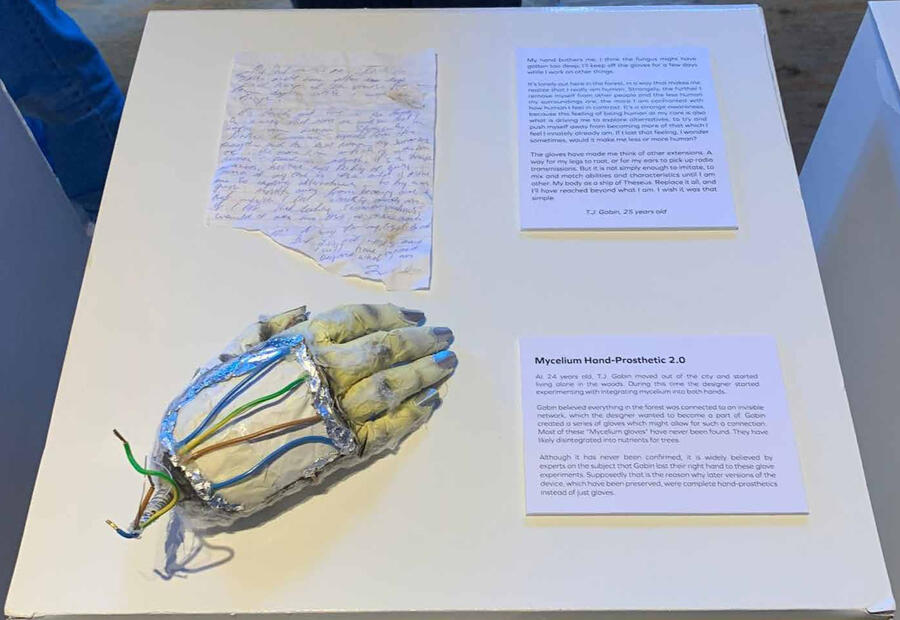
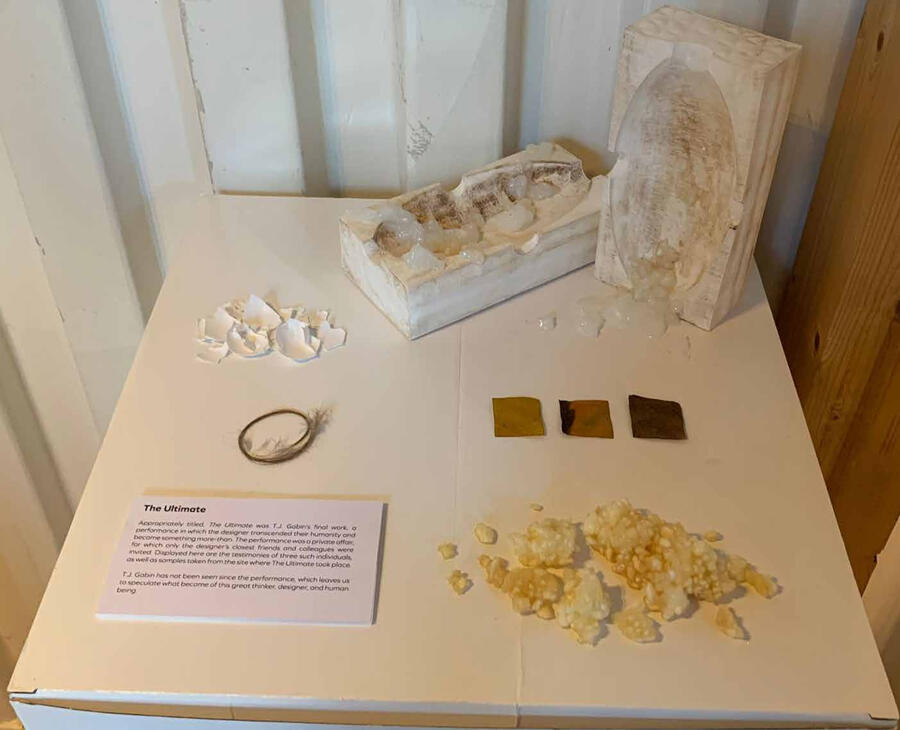
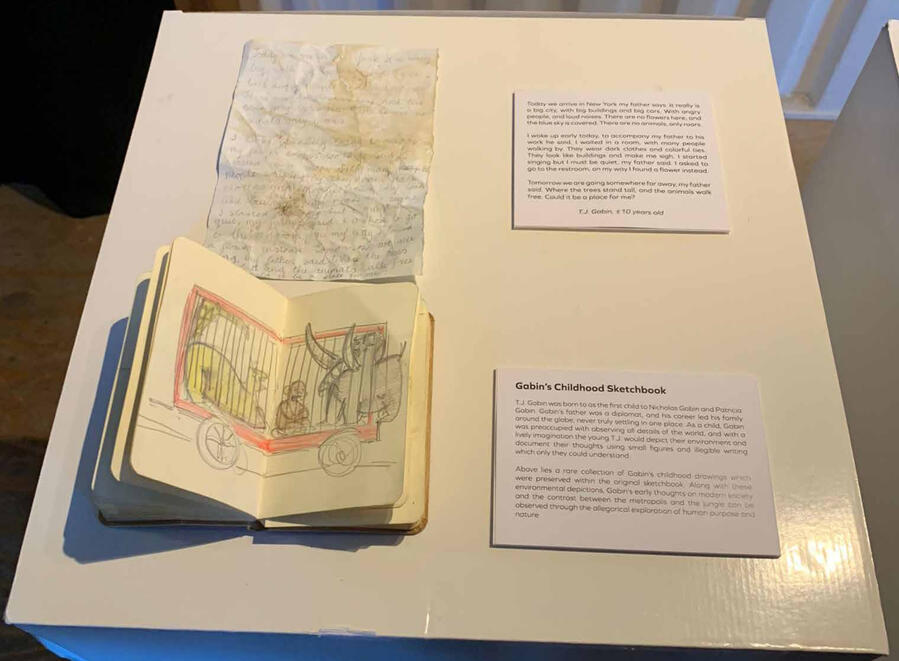
In this course I created transformative designs for tea-drinking, inspired by William James' writing on pragmatism.
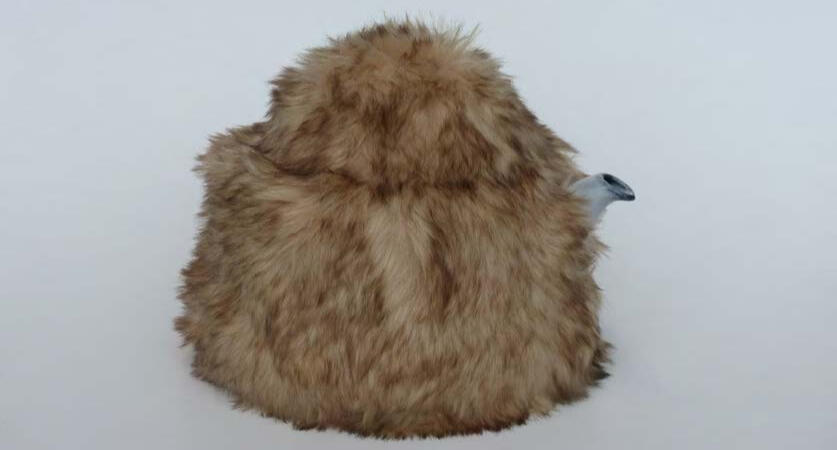
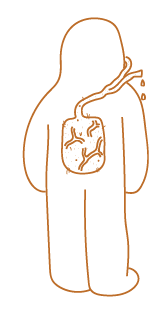

"The Social Stomach"
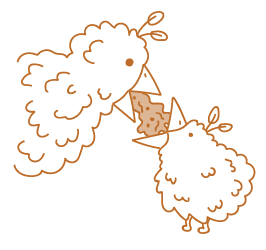

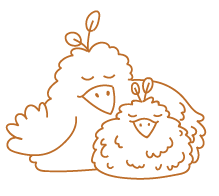
In this course I learned about different theories and ways of engaging with the ethics of design and HCI.
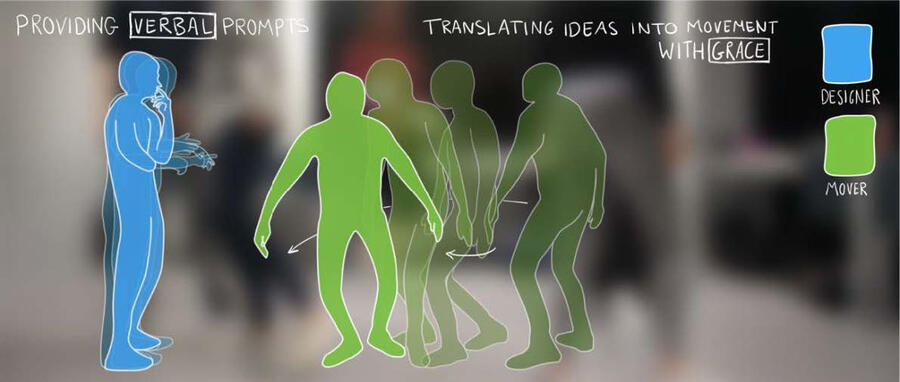
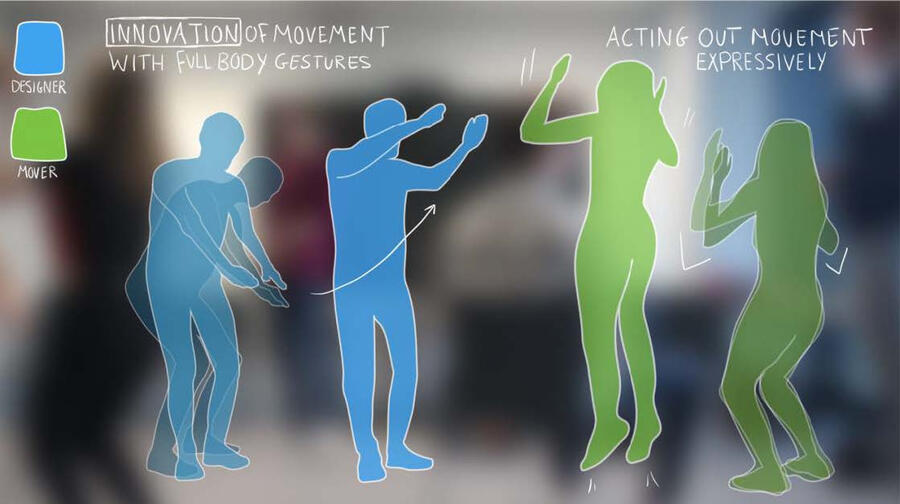
In this course I learned more about design research. Our team organized somaesthetic workshop to explore the potential value of bringing experienced movers (e.g. dancers, athletes) into a design process. Our paper was further developed in collaboration with PhD candidate Yeup Hur and Prof. Panos Markopolous, and published as a paper by the Design Research Society.
In this course at the TU Delft, I learned about how to organize design research activities with child participants. Me and my partner conducted a contextmapping and a co-design session about the topic of resilience with local primary school children, and presented our results in a poster.

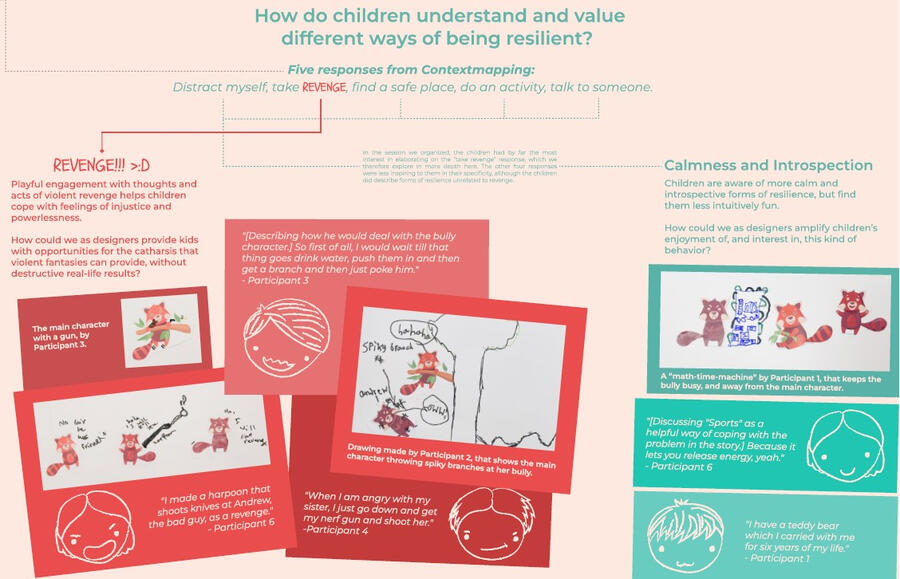
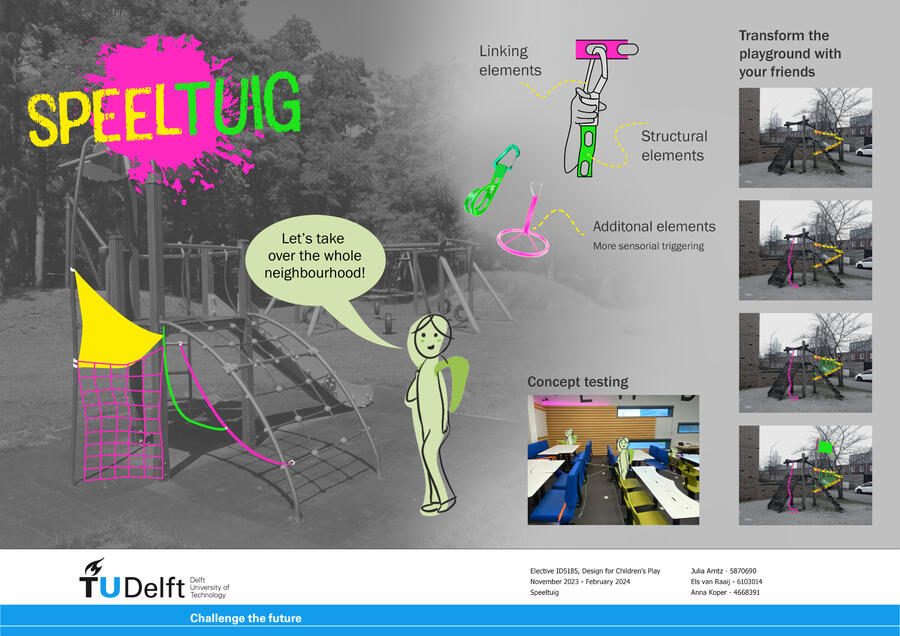
In this course at the TU Delft, I learned about the theory behind designing for children's play. My team designed and prototyped a modular kit for modifying playgrounds, and conducted two user evaluation sessions with local primary school children to test the design.
In this course I learned about psychological theories of behavioral change, and how they can be applied to design. My team created a design concept for an app that motivates users to eat less meat.
